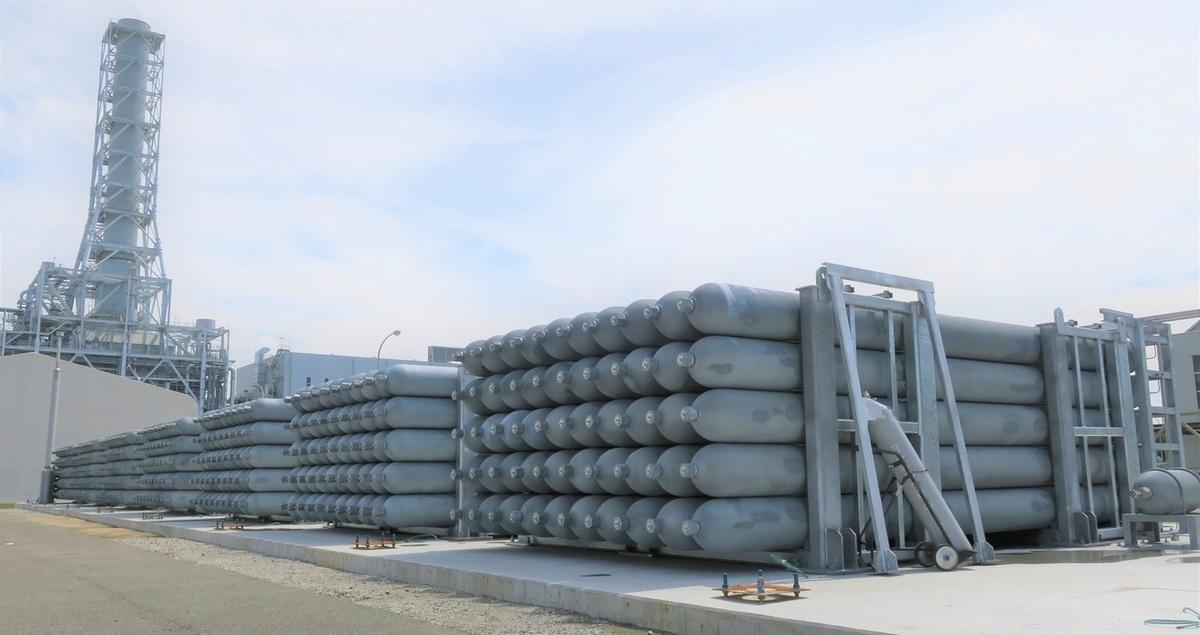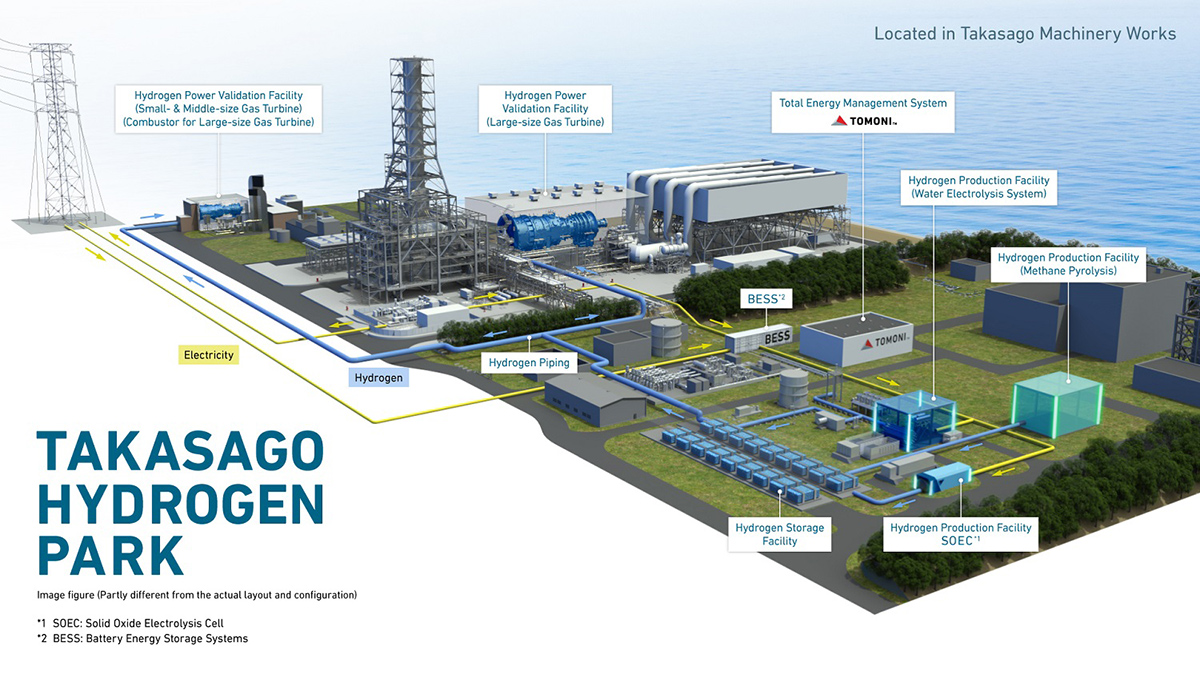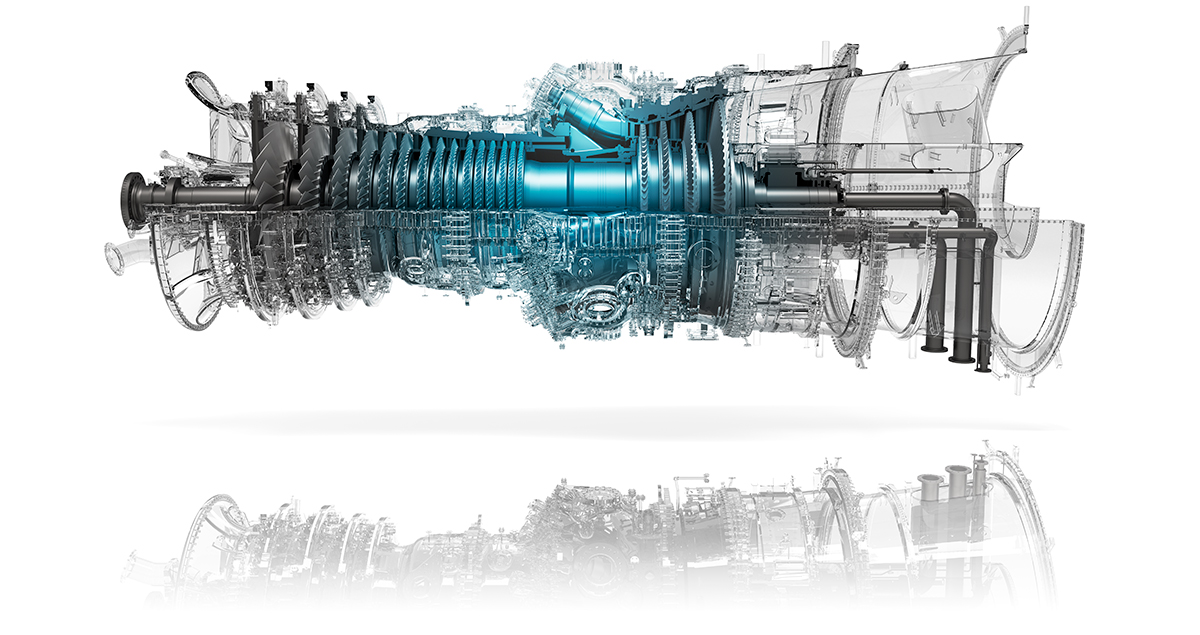Takasago: Demonstrating the power of hydrogen

Hydrogen is set to become a key part of the energy transition, but there is some way to go before sustainable hydrogen surpasses fossil fuels as the global go-to fuel.
Researchers and engineers first need to understand more about both hydrogen as a fuel and hydrogen gas turbines for power generation.
To this end, the world’s first center for validation of hydrogen-related technologies is being built in Japan, dedicated to verifying hydrogen production, storage, power generation and other next-generation technologies.
The results could help inform a host of projects around the world, providing valuable insights to help kick-start the global hydrogen economy.
Testing times at Takasago
Takasago Hydrogen Park is being built at Mitsubishi Heavy Industries (MHI) Group’s Takasago Machinery Works in Hyogo Prefecture, Japan.
Due for completion in fiscal year 2023, the newly constructed facility sits beside an existing gas turbine development and manufacturing facility, which is no coincidence. This wealth of hydrogen and gas turbine expertise can be used to support the commercialization of hydrogen gas turbines.
Hydrogen will be produced on-site using water electrolysis, and potentially also using other next-generation technologies such as methane pyrolysis to produce ‘turquoise’ hydrogen with solid carbon as a by-product.
Once generated, the hydrogen will be transferred to a storage facility, before being used as a combustion fuel at the adjacent hydrogen power validation facilities.
Large frame JAC-series gas turbine and small and mid-sized H-25-series gas turbine have already been installed and will be verified for hydrogen firing with the aim of reducing emissions to zero carbon, while maintaining the same power output.
Based on this verification process, MHI Group aims to help commercialize 30% hydrogen and natural gas co-firing for large frame gas turbines and 100% hydrogen firing for small and mid-sized gas turbines by 2025.

Investing in a hydrogen future
Takasago Hydrogen Park doesn’t compare in pure scale with many other hydrogen projects being developed around the world (its single water electrolyzer is overshadowed by the 40 in place at Mitsubishi Power Americas’ facility in Utah, for example). However, the work being conducted at Takasago is very much part of hydrogen’s bigger picture since it is the first-step verification on which subsequent commercial projects will be based.
Alongside Takasago, many other projects are working to realize hydrogen’s full potential as a transition fuel, with regions like Australia, the Middle East, Europe and the US also leading the way.
International Energy Agency (IEA) statistics show that IEA and EU member countries increased research, development and demonstration spending on hydrogen and fuel cells by 27% in 2021, following a 23% increase the previous year.
Australia has projects planned totaling 69 gigawatts of green hydrogen electrolyzer capacity — the highest of any country
Saudi Arabia has pledged to match its status as leading global oil exporter by becoming the world’s top hydrogen exporter. The Kingdom is home to one of the world’s largest green hydrogen production projects, which targets 60 gigawatts of clean energy exports by 2030.

Results from the Takasago Hydrogen Park will bolster what’s known globally about hydrogen power related technologies at commercial scale. It’s hoped these insights and proof-of-concept validations will encourage the policy decisions, investments and talent development needed to fast-track further hydrogen developments.
The IEA’s The Future of Hydrogen report notes that clean hydrogen is enjoying an unprecedented political and business momentum, with projects and policies expanding rapidly. Now is the time to scale up hydrogen technologies, which should bring down costs and allow the nascent global hydrogen economy to thrive.
“The world should not miss this unique chance to make hydrogen an important part of our clean and secure energy future,” said Dr Fatih Birol, IEA Executive Director.
Discover more aboutHydrogen and Ammonia: Rocket fuel toward net zero by 2050





